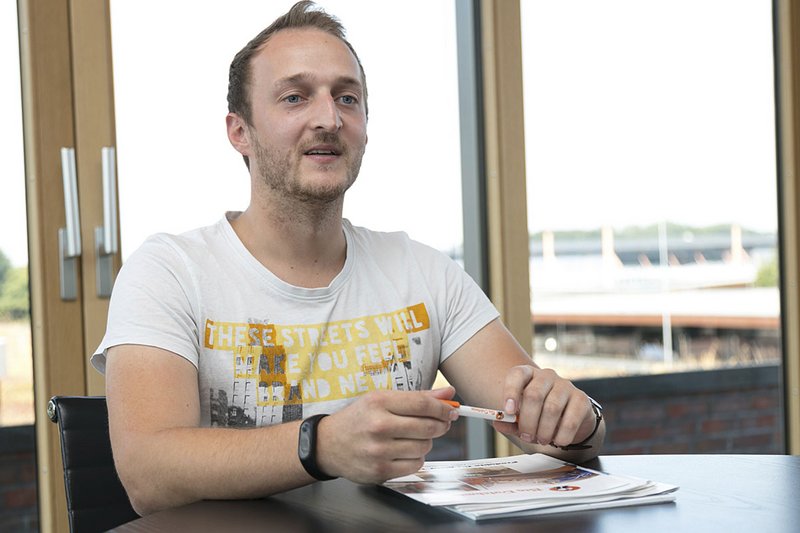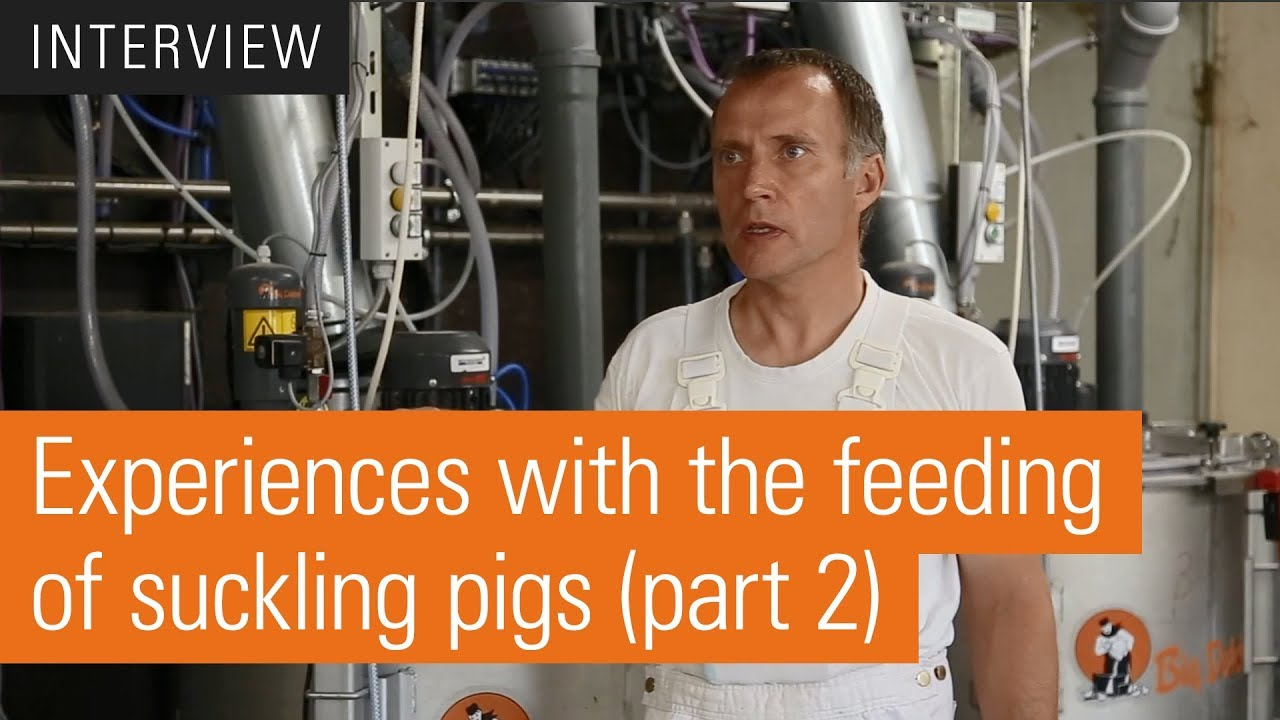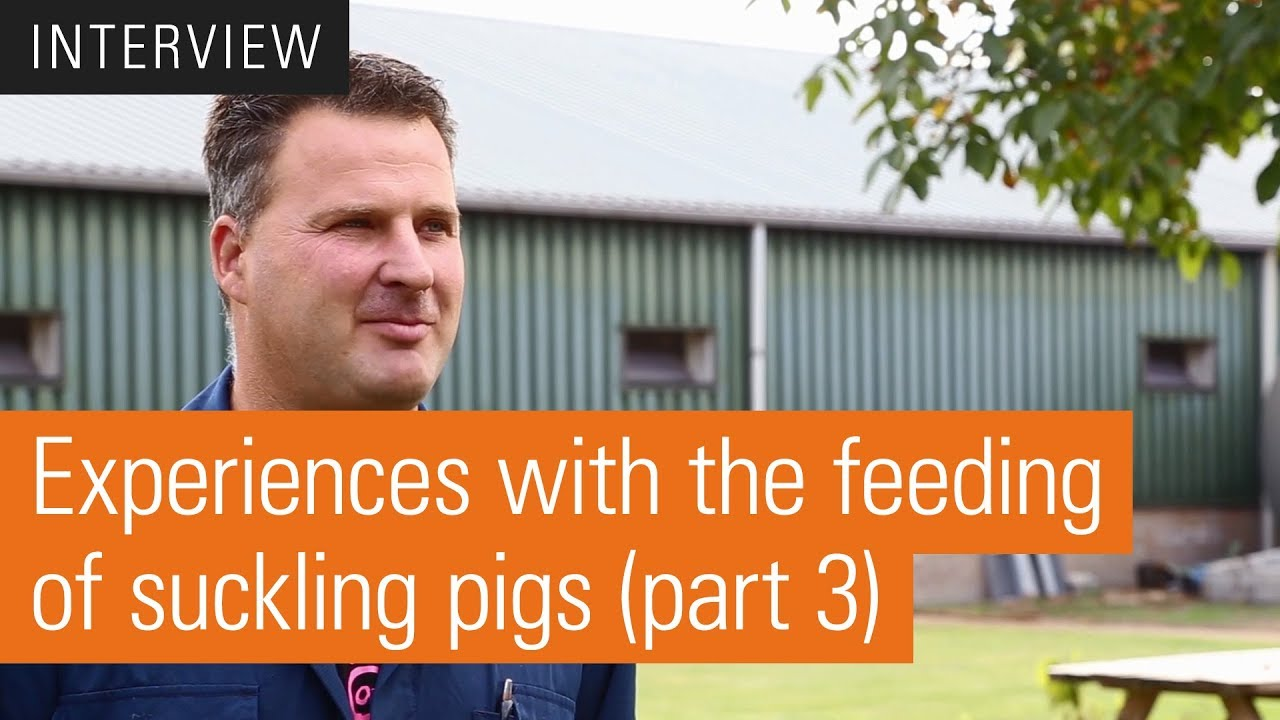Successfully managing large litters can be quite a challenge for sow managers. The farmers make use of various methods to foster underweight and surplus piglets. They move their “little patients” to sows with smaller litters (cross-fostering), work with nurse sows or use specifically developed systems for the feeding of suckling pigs. Big Dutchman can offer a fully automatic option: CulinaFlexpro.
The feeding system is very popular with customers, as indicated by video interviews with sow managers in Denmark, Germany and The Netherlands.
What makes CulinaFlexpro attractive for piglet producers? Big Dutchman product manager Dennis Engelking, customer engineer Marco Meier zu Farwig and salesman Tobias Ruhe provide some answers.
CulinaFlexpro is still quite a new product, but has many fans already, as we can hear in the video. Success has many fathers, as they say. Are you the fathers in this case?
Engelking: I would say: yes and no! It all started around eight years ago, when employees of the feed producer Bröring from Dinklage, Germany, repeatedly faced the problem of larger litters. This led to the development of a feeding system for suckling pigs, CulinaCupLine.
This semi-automatic feeding system for piglets dispenses feed into small cups. Until today, more than 28,000 of these cups have been installed worldwide.
Ruhe: Two and a half years ago, Bröring and Big Dutchman reached an agreement that Big Dutchman should exclusively distribute and further develop the system. We also provide the service.
The result of this agreement is CulinaFlexpro. The automatic feeding system is therefore truly a “child” of the district of Vechta. And we can be considered its fathers, while our friends in Dinklage may call themselves its “grandfathers”, and rightly so.
CulinaCupLine is here to stay?
Meier zu Farwig: Of course. The system is very well established on the market. Some customers like working with the cups. Others prefer feeding their piglets fully automatically. We want to be able to cater to both preferences.
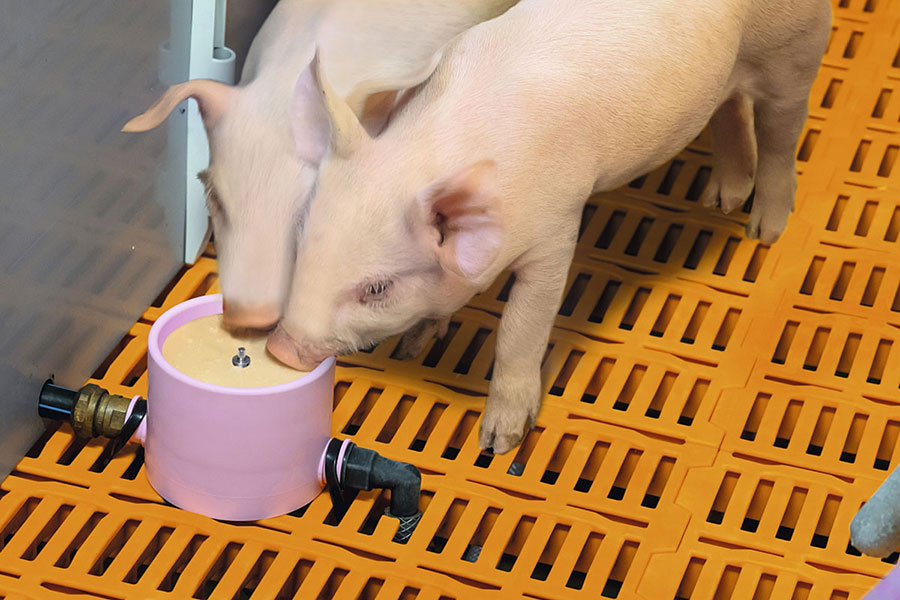
CulinaCup
What is the purpose of a feeding system for suckling pigs?
Meier zu Farwig: CulinaFlexpro and CulinaCupLine have both been designed to compensate deficits. That is their job. Imagine a human baby. If the mother’s milk is not sufficient for the baby, it is given the bottle.
Are there more parallels to the feeding of babies with CulinaFlexpro?
Engelking: Yes, there are. One parallel is the temperature. Just like babies, piglets receive warm feed.
The system ensures that the feed reaches the mixing temperature so that all fat particles are dissolved. The computer then lowers the feed’s temperature so it is correct for feeding. To make sure that the feed does not get too cold while on its way to the piglets, we always use insulated pipes for feed transport.
If requested, we are one of the few equipment suppliers who is able to install a heat exchanger. This device may be best compared with a bottle warmer used for baby milk. The heat exchanger ensures that the feed dispensed at the troughs has a specific and constant temperature.
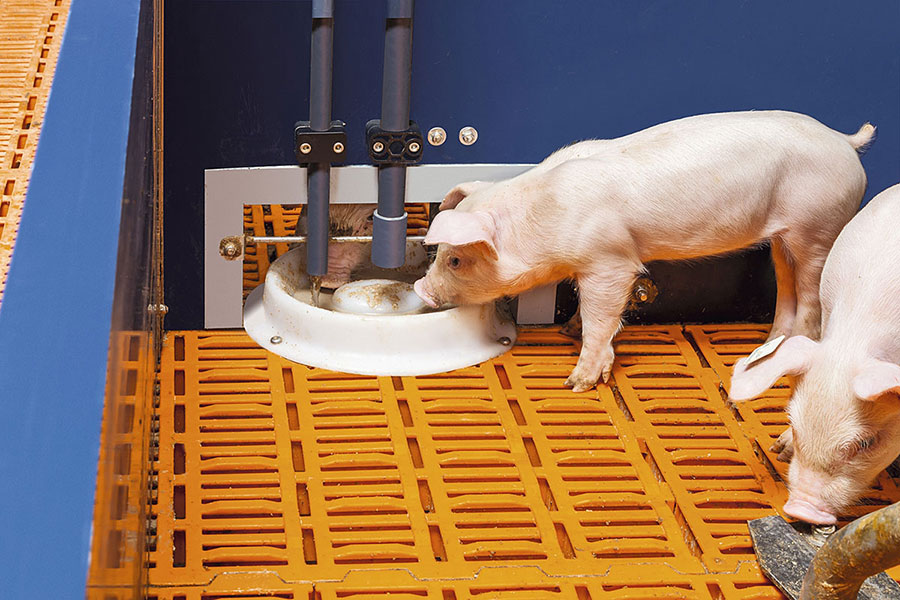
CulinaFlexpro
Another feature of CulinaFlexpro is the positive displacement pump. What does this pump do?
Meier zu Farwig: We use a pressure-controlled pump to be able to feed a higher dry matter percentage. Due to this more viscous feed, the piglets absorb more energy and train their gut flora. They grow and thrive better.
What does a typical feeding process look like?
Ruhe: The tanks are installed on weigh bars. If a weighed tank is empty, the computer sends a message. The farmer defines what follows in the settings he configured beforehand. He can mix a new batch of milk or pre-starter, use water to push remaining feed out of the pipes, or stop feeding entirely, for example for the night. Of course, remaining feed is pushed out of the pipes by compressed air if feeding is stopped. Either water remains in the pipes, or they are empty. Both solutions are possible.
Similarly to the tanks, the troughs are also equipped with sensors. If the troughs indicate that they are empty, they are refilled in small portions until the sensor reports “full” or “maximum dosing”.
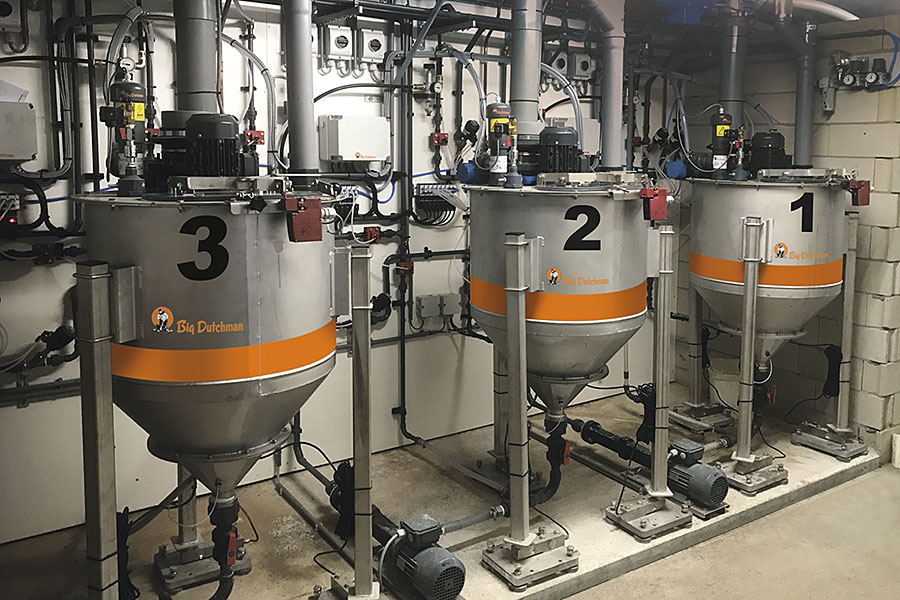
CulinaFlexpro feed kitchen
We have heard that CulinaFlexpro likes to take a nap now and then. How do you explain a sleeping feeding system?
Meier zu Farwig: It’s true, CulinaFlexpro goes to “sleep” regularly. This means that the system goes into idle mode when the sensors report that the troughs have not been emptied by the piglets for a specific length of time. Many farmers select this pause should start after five minutes. The length of the pause can be set individually. According to our experiences, the pause tends to be between twenty minutes and one hour long.
What are the advantages?
Ruhe: These naps really pay off! On the one hand, there is the aspect of feed hygiene. Since the piglets completely empty the troughs, the feed does not become stale, which has a positive effect on piglet health.
Additionally, the service life of CulinaFlexpro is extended, because the pauses delay wear. Less is more in this case!
What else does CulinaFlexpro have that other feeding systems for suckling pigs lack?
Engelking: In contrast to other systems available on the market, the sensors are checked in real time, i.e. permanently and simultaneously. We can thus guarantee that the piglets always receive absolutely fresh feed.
Meier zu Farwig: Moreover, we have designed CulinaFlexpro in such a way that farmers can supply feed to multiple valves at the same time. The wait for new feed is very short, so that the piglets stay at the trough and can eat until they are full.
With other feeding systems for suckling pigs, just one valve per tank is the standard, in some cases just one valve per system. The pauses between dosing of individual portions can be very long with such a setup. The piglets stop eating before they are full and return to the sow or the heating plate.
What other advantages does CulinaFlexpro have?
Ruhe: Our product range includes PE tanks. However, unlike other suppliers, we always use weighed stainless steel tanks to prepare the feed. This is because stainless steel can be cleaned more thoroughly than any other material, allowing an ideal hygiene status.
Speaking of hygiene: which other features ensure that the system remains impeccably clean?
Ruhe: Hygiene really pays off, especially in piglet rearing. Based on the motto “Never change a winning team!”, we used well-proven concepts during the development of CulinaFlexpro. One example are the cleaning heads and acid foggers, which have achieved outstanding results in our liquid feeding systems.
Additionally, all pipes, including the drop pipes, can be cleaned with acids or alkalis.
The last syllable ‘pro’ of CulinaFlexpro indicates that the system is compatible with BigFarmNet. What does that mean?
Meier zu Farwig: BigFarmNet is a software that combines all applications of a pig farm, from electronic sow feeding (ESF) to silo weighing, in one program and one database. CulinaFlexpro can be integrated as well.
With just a few clicks, farmers thus have full control of their entire operation. This may be at just one location or more than one. The great thing about BigFarmNet is that the software has been used successfully for nearly ten years, i.e. it has long since passed its practical test. At the same time, it is a technology of the future. Our software engineers have left open all possible interfaces to ensure that they can continue developing BigFarmNet into any direction.
Let’s end with a question regarding your future plans for CulinaFlexpro. Do you have any new system features in the pipeline, and if so, can you tell us more about them?
Engelking: We are currently planning analysis tools to support farmers in optimising their feeding strategies.
For anything else, time will tell. Or more accurately: our customers will! It is good Big Dutchman practice to integrate the ideas and also the criticism of the farmers who use our equipment daily into our work.



